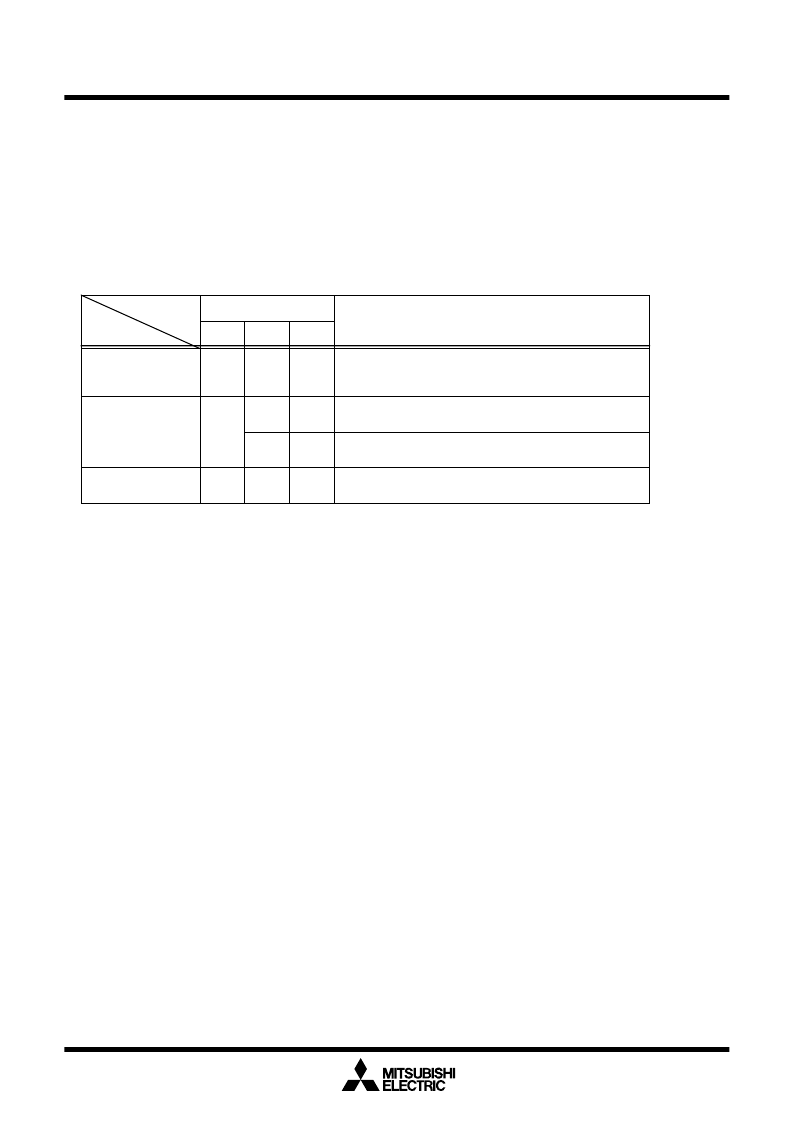- 您現(xiàn)在的位置:買(mǎi)賣(mài)IC網(wǎng) > PDF目錄370824 > M16C62A (Mitsubishi Electric Corporation) SINGLE-CHIP 16-BIT CMOS MICROCOMPUTER PDF資料下載
參數(shù)資料
| 型號(hào): | M16C62A |
| 廠商: | Mitsubishi Electric Corporation |
| 英文描述: | SINGLE-CHIP 16-BIT CMOS MICROCOMPUTER |
| 中文描述: | 單片16位CMOS微機(jī) |
| 文件頁(yè)數(shù): | 138/274頁(yè) |
| 文件大?。?/td> | 3593K |
| 代理商: | M16C62A |
第1頁(yè)第2頁(yè)第3頁(yè)第4頁(yè)第5頁(yè)第6頁(yè)第7頁(yè)第8頁(yè)第9頁(yè)第10頁(yè)第11頁(yè)第12頁(yè)第13頁(yè)第14頁(yè)第15頁(yè)第16頁(yè)第17頁(yè)第18頁(yè)第19頁(yè)第20頁(yè)第21頁(yè)第22頁(yè)第23頁(yè)第24頁(yè)第25頁(yè)第26頁(yè)第27頁(yè)第28頁(yè)第29頁(yè)第30頁(yè)第31頁(yè)第32頁(yè)第33頁(yè)第34頁(yè)第35頁(yè)第36頁(yè)第37頁(yè)第38頁(yè)第39頁(yè)第40頁(yè)第41頁(yè)第42頁(yè)第43頁(yè)第44頁(yè)第45頁(yè)第46頁(yè)第47頁(yè)第48頁(yè)第49頁(yè)第50頁(yè)第51頁(yè)第52頁(yè)第53頁(yè)第54頁(yè)第55頁(yè)第56頁(yè)第57頁(yè)第58頁(yè)第59頁(yè)第60頁(yè)第61頁(yè)第62頁(yè)第63頁(yè)第64頁(yè)第65頁(yè)第66頁(yè)第67頁(yè)第68頁(yè)第69頁(yè)第70頁(yè)第71頁(yè)第72頁(yè)第73頁(yè)第74頁(yè)第75頁(yè)第76頁(yè)第77頁(yè)第78頁(yè)第79頁(yè)第80頁(yè)第81頁(yè)第82頁(yè)第83頁(yè)第84頁(yè)第85頁(yè)第86頁(yè)第87頁(yè)第88頁(yè)第89頁(yè)第90頁(yè)第91頁(yè)第92頁(yè)第93頁(yè)第94頁(yè)第95頁(yè)第96頁(yè)第97頁(yè)第98頁(yè)第99頁(yè)第100頁(yè)第101頁(yè)第102頁(yè)第103頁(yè)第104頁(yè)第105頁(yè)第106頁(yè)第107頁(yè)第108頁(yè)第109頁(yè)第110頁(yè)第111頁(yè)第112頁(yè)第113頁(yè)第114頁(yè)第115頁(yè)第116頁(yè)第117頁(yè)第118頁(yè)第119頁(yè)第120頁(yè)第121頁(yè)第122頁(yè)第123頁(yè)第124頁(yè)第125頁(yè)第126頁(yè)第127頁(yè)第128頁(yè)第129頁(yè)第130頁(yè)第131頁(yè)第132頁(yè)第133頁(yè)第134頁(yè)第135頁(yè)第136頁(yè)第137頁(yè)當(dāng)前第138頁(yè)第139頁(yè)第140頁(yè)第141頁(yè)第142頁(yè)第143頁(yè)第144頁(yè)第145頁(yè)第146頁(yè)第147頁(yè)第148頁(yè)第149頁(yè)第150頁(yè)第151頁(yè)第152頁(yè)第153頁(yè)第154頁(yè)第155頁(yè)第156頁(yè)第157頁(yè)第158頁(yè)第159頁(yè)第160頁(yè)第161頁(yè)第162頁(yè)第163頁(yè)第164頁(yè)第165頁(yè)第166頁(yè)第167頁(yè)第168頁(yè)第169頁(yè)第170頁(yè)第171頁(yè)第172頁(yè)第173頁(yè)第174頁(yè)第175頁(yè)第176頁(yè)第177頁(yè)第178頁(yè)第179頁(yè)第180頁(yè)第181頁(yè)第182頁(yè)第183頁(yè)第184頁(yè)第185頁(yè)第186頁(yè)第187頁(yè)第188頁(yè)第189頁(yè)第190頁(yè)第191頁(yè)第192頁(yè)第193頁(yè)第194頁(yè)第195頁(yè)第196頁(yè)第197頁(yè)第198頁(yè)第199頁(yè)第200頁(yè)第201頁(yè)第202頁(yè)第203頁(yè)第204頁(yè)第205頁(yè)第206頁(yè)第207頁(yè)第208頁(yè)第209頁(yè)第210頁(yè)第211頁(yè)第212頁(yè)第213頁(yè)第214頁(yè)第215頁(yè)第216頁(yè)第217頁(yè)第218頁(yè)第219頁(yè)第220頁(yè)第221頁(yè)第222頁(yè)第223頁(yè)第224頁(yè)第225頁(yè)第226頁(yè)第227頁(yè)第228頁(yè)第229頁(yè)第230頁(yè)第231頁(yè)第232頁(yè)第233頁(yè)第234頁(yè)第235頁(yè)第236頁(yè)第237頁(yè)第238頁(yè)第239頁(yè)第240頁(yè)第241頁(yè)第242頁(yè)第243頁(yè)第244頁(yè)第245頁(yè)第246頁(yè)第247頁(yè)第248頁(yè)第249頁(yè)第250頁(yè)第251頁(yè)第252頁(yè)第253頁(yè)第254頁(yè)第255頁(yè)第256頁(yè)第257頁(yè)第258頁(yè)第259頁(yè)第260頁(yè)第261頁(yè)第262頁(yè)第263頁(yè)第264頁(yè)第265頁(yè)第266頁(yè)第267頁(yè)第268頁(yè)第269頁(yè)第270頁(yè)第271頁(yè)第272頁(yè)第273頁(yè)第274頁(yè)

Mitsubishi microcomputers
M16C / 62A Group
SINGLE-CHIP 16-BIT CMOS MICROCOMPUTER
UART2 Special Mode Register
138
An attempt to read Port P7
1
(SCL) results in getting the terminal’s level regardless of the content of the
port direction register. The initial value of SDA transmission output in this mode goes to the value set in
port P7
0
. The interrupt factors of the bus collision detection interrupt, UART2 transmission interrupt, and
of UART2 reception interrupt turn to the start/stop condition detection interrupt, acknowledgment non-
detection interrupt, and acknowledgment detection interrupt respectively.
The start condition detection interrupt refers to the interrupt that occurs when the falling edge of the SDA
terminal (P7
0
) is detected with the SCL terminal (P7
1
) staying “H”. The stop condition detection interrupt
refers to the interrupt that occurs when the rising edge of the SDA terminal (P7
0
) is detected with the SCL
terminal (P7
1
) staying “H”. The bus busy flag (bit 2 of the UART2 special mode register) is set to “1” by the
start condition detection, and set to “0” by the stop condition detection.
The acknowledgment non-detection interrupt refers to the interrupt that occurs when the SDA terminal
level is detected still staying “H” at the rising edge of the 9th transmission clock. The acknowledgment
detection interrupt refers to the interrupt that occurs when SDA terminal’s level is detected already went
to “L” at the 9th transmission clock. Also, assigning 1 1 0 1 (UART2 reception) to the DMA1 request factor
select bits provides the means to start up the DMA transfer by the effect of acknowledgment detection.
Bit 1 of the UART2 special mode register (0377
16
) is used as the arbitration lost detecting flag control bit.
Arbitration means the act of detecting the nonconformity between transmission data and SDA terminal
data at the timing of the SCL rising edge. This detecting flag is located at bit 11 of the UART2 reception
buffer register (037F
16
, 037E
16
), and “1” is set in this flag when nonconformity is detected. Use the
arbitration lost detecting flag control bit to choose which way to use to update the flag, bit by bit or byte by
byte. When setting this bit to “1” and updated the flag byte by byte if nonconformity is detected, the
arbitration lost detecting flag is set to “1” at the falling edge of the 9th transmission clock.
If update the flag byte by byte, must judge and clear (“0”) the arbitration lost detecting flag after complet-
ing the first byte acknowledge detect and before starting the next one byte transmission.
Bit 3 of the UART2 special mode register is used as SCL- and L-synchronous output enable bit. Setting
this bit to “1” goes the P7
1
data register to “0” in synchronization with the SCL terminal level going to “L”.
Figure 1.16.27 shows the functional block diagram for I
2
C mode. Setting “1” in the I
2
C mode select bit
(IICM) causes ports P7
0
, P7
1
, and P7
2
to work as data transmission-reception terminal SDA, clock input-
output terminal SCL, and port P7
2
respectively. A delay circuit is added to the SDA transmission output,
so the SDA output changes after SCL fully goes to “L”. The SDA digital delay select bit (bit 7 at address
0377
16
) can be used to select between analog delay and digital delay. When digital delay is selected, the
amount of delay can be selected in the range of 2 cycles to 8 cycles of f1 using UART2 special mode
register 3 (at address 0375
16
). Delay circuit select conditions are shown in Table 1.16.10.
Table 1.16.10. Delay circuit select conditions
Digital delay is
selected
001
to
111
000
(000)
1
0
1
1
1
Analog delay is
selected
No delay
0
0
(000)
IICM
SDDS
DL
Register value
Contents
When digital delay is selected, no analog delay is added. Only
digital delay is effective.
When DL is set to “000”, analog delay is selected no matter what
value is set in SDDS.
When SDDS is set to “0”, DL is initialized, so that DL =“000”.
When IICM = “0”, no delay circuit is selected. When IICM = “0”,
however, always make sure SDDS = “0”.
相關(guān)PDF資料 |
PDF描述 |
|---|---|
| M16C62P | SINGLE-CHIP 16-BIT CMOS MICROCOMPUTER |
| M16C | SR BTS PC 13 ASY C |
| M1951A | VOLTAGE DETECTING,SYSTEM RESETTING IC SERIES |
| M1951B | VOLTAGE DETECTING,SYSTEM RESETTING IC SERIES |
| M1952A | VOLTAGE DETECTING,SYSTEM RESETTING IC SERIES |
相關(guān)代理商/技術(shù)參數(shù) |
參數(shù)描述 |
|---|---|
| M16C62GF8NGP | 制造商:RENESAS 制造商全稱(chēng):Renesas Technology Corp 功能描述:SINGLE-CHIP 16-BIT CMOS MICROCOMPUTER |
| M16C62M | 制造商:RENESAS 制造商全稱(chēng):Renesas Technology Corp 功能描述:SINGLE-CHIP 16-BIT CMOS MICROCOMPUTER |
| M16C62N | 制造商:RENESAS 制造商全稱(chēng):Renesas Technology Corp 功能描述:SINGLE-CHIP 16-BIT CMOS MICROCOMPUTER |
| M16C62P | 制造商:MITSUBISHI 制造商全稱(chēng):Mitsubishi Electric Semiconductor 功能描述:SINGLE-CHIP 16-BIT CMOS MICROCOMPUTER |
| M16C62P_06 | 制造商:RENESAS 制造商全稱(chēng):Renesas Technology Corp 功能描述:16-BIT SINGLE-CHIP MICROCOMPUTER M16C FAMILY / M16C/60 SERIES |
發(fā)布緊急采購(gòu),3分鐘左右您將得到回復(fù)。